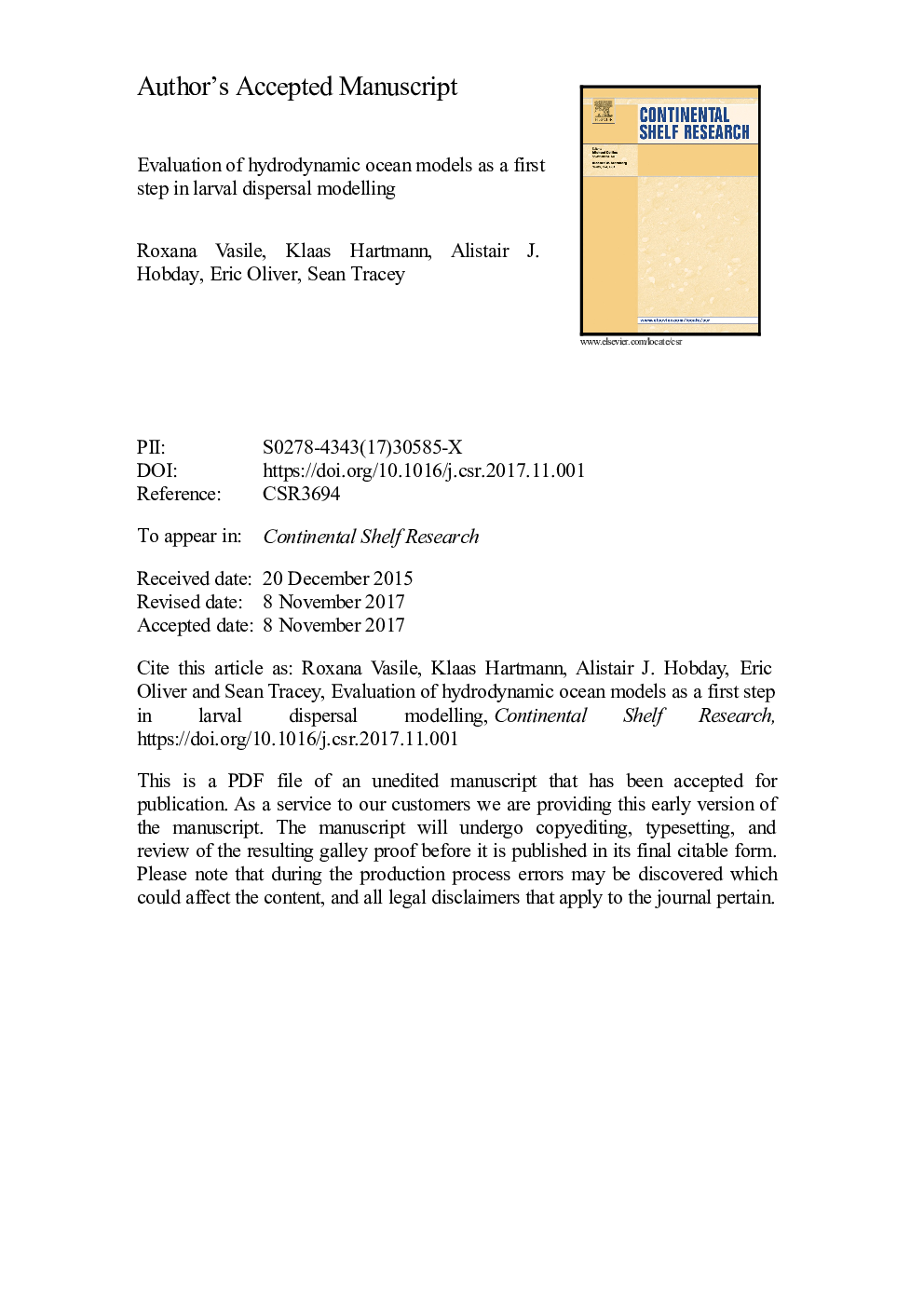| کد مقاله | کد نشریه | سال انتشار | مقاله انگلیسی | نسخه تمام متن |
|---|---|---|---|---|
| 8884108 | 1626061 | 2018 | 41 صفحه PDF | دانلود رایگان |
عنوان انگلیسی مقاله ISI
Evaluation of hydrodynamic ocean models as a first step in larval dispersal modelling
ترجمه فارسی عنوان
ارزیابی مدل های اقیانوس هیدرودینامیکی به عنوان اولین گام در مدل سازی پراکندگی
دانلود مقاله + سفارش ترجمه
دانلود مقاله ISI انگلیسی
رایگان برای ایرانیان
موضوعات مرتبط
مهندسی و علوم پایه
علوم زمین و سیارات
زمین شناسی
چکیده انگلیسی
Larval dispersal modelling, a powerful tool in studying population connectivity and species distribution, requires accurate estimates of the ocean state, on a high-resolution grid in both space (e.g. 0.5-1 km horizontal grid) and time (e.g. hourly outputs), particularly of current velocities and water temperature. These estimates are usually provided by hydrodynamic models based on which larval trajectories and survival are computed. In this study we assessed the accuracy of two hydrodynamic models around Australia - Bluelink ReANalysis (BRAN) and Hybrid Coordinate Ocean Model (HYCOM) - through comparison with empirical data from the Australian National Moorings Network (ANMN). We evaluated the models' predictions of seawater parameters most relevant to larval dispersal - temperature, u and v velocities and current speed and direction - on the continental shelf where spawning and nursery areas for major fishery species are located. The performance of each model in estimating ocean parameters was found to depend on the parameter investigated and to vary from one geographical region to another. Both BRAN and HYCOM models systematically overestimated the mean water temperature, particularly in the top 140 m of water column, with over 2 °C bias at some of the mooring stations. HYCOM model was more accurate than BRAN for water temperature predictions in the Great Australian Bight and along the east coast of Australia. Skill scores between each model and the in situ observations showed lower accuracy in the models' predictions of u and v ocean current velocities compared to water temperature predictions. For both models, the lowest accuracy in predicting ocean current velocities, speed and direction was observed at 200 m depth. Low accuracy of both model predictions was also observed in the top 10 m of the water column. BRAN had more accurate predictions of both u and v velocities in the upper 50 m of water column at all mooring station locations. While HYCOM predictions of ocean current speed were generally more accurate than BRAN, BRAN predictions of both ocean current speed and direction were more accurate than HYCOM along the southeast coast of Australia and Tasmania. This study identified important inaccuracies in the hydrodynamic models' estimations of the real ocean parameters and on time scales relevant to larval dispersal studies. These findings highlight the importance of the choice and validation of hydrodynamic models, and calls for estimates of such bias to be incorporated in dispersal studies.
ناشر
Database: Elsevier - ScienceDirect (ساینس دایرکت)
Journal: Continental Shelf Research - Volume 152, 1 January 2018, Pages 38-49
Journal: Continental Shelf Research - Volume 152, 1 January 2018, Pages 38-49
نویسندگان
Roxana Vasile, Klaas Hartmann, Alistair J. Hobday, Eric Oliver, Sean Tracey,
